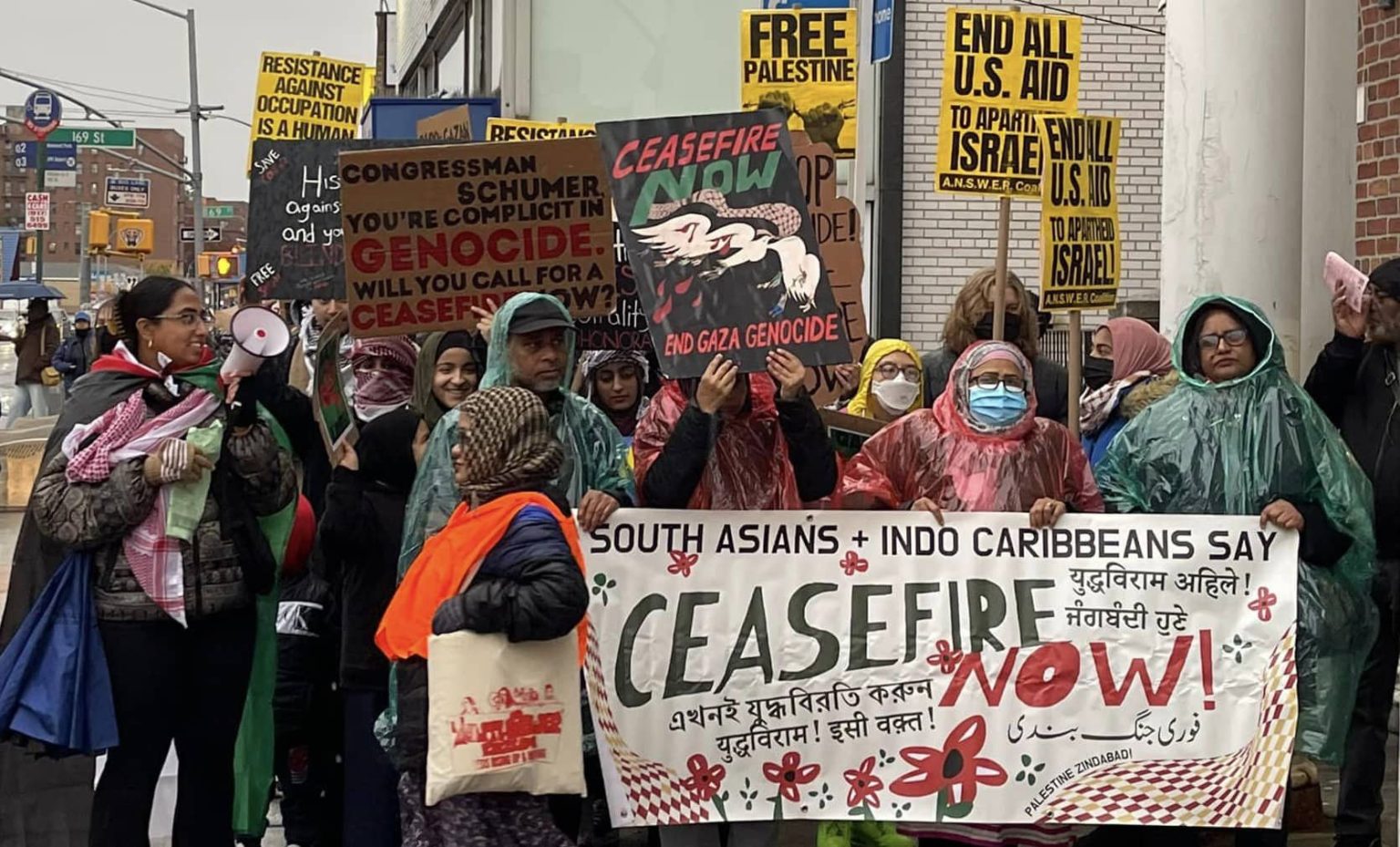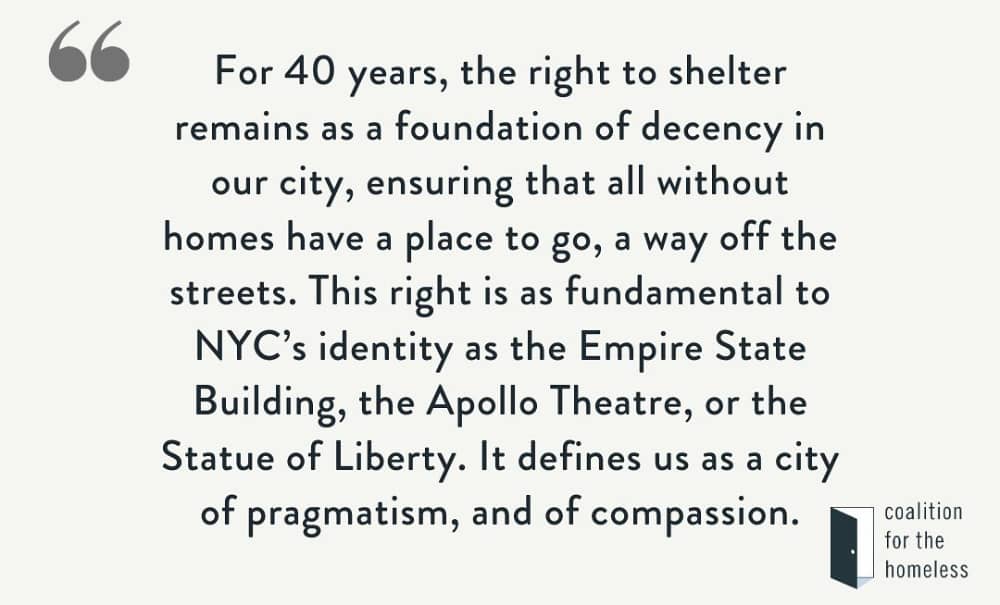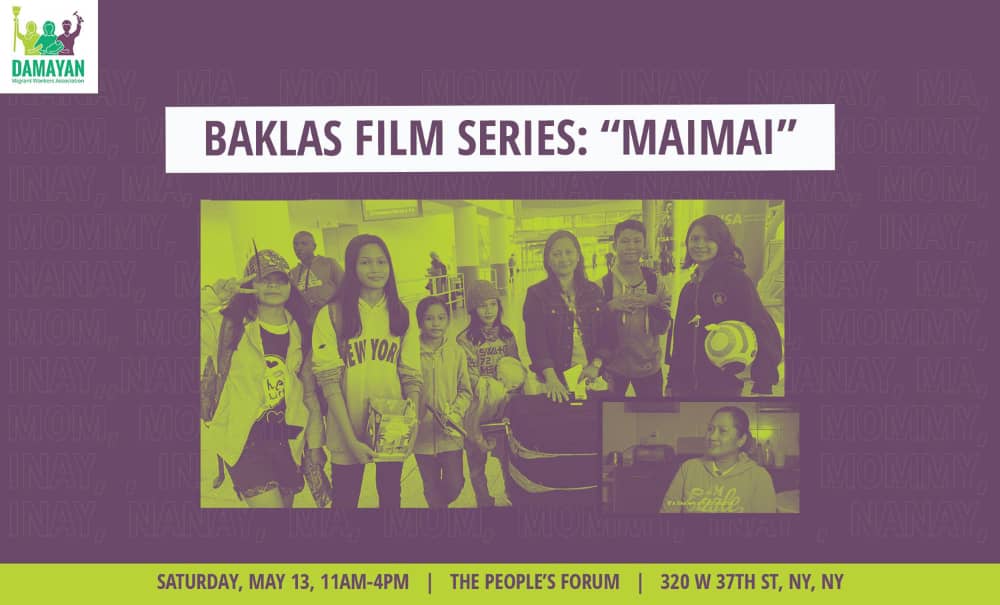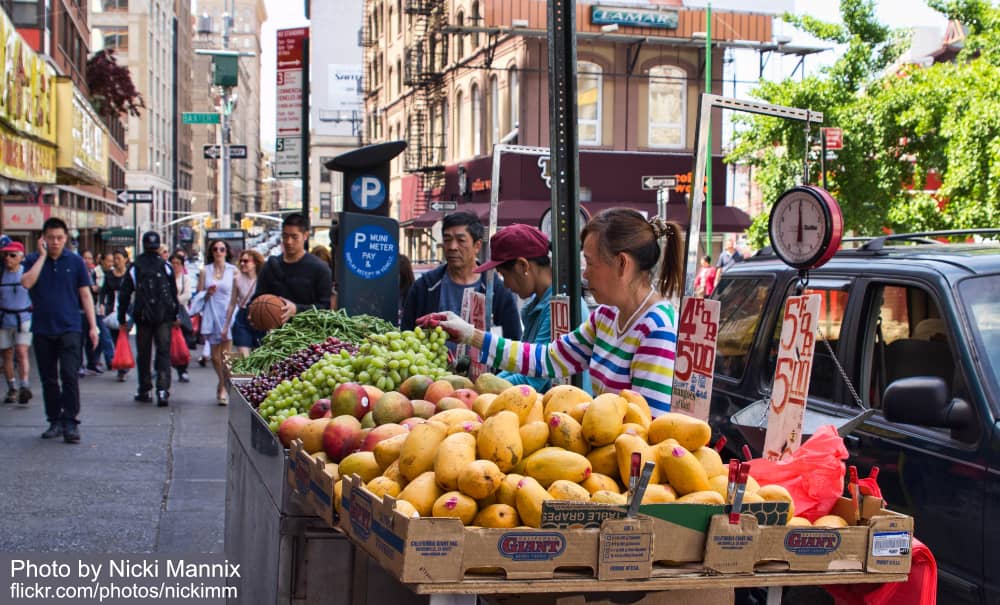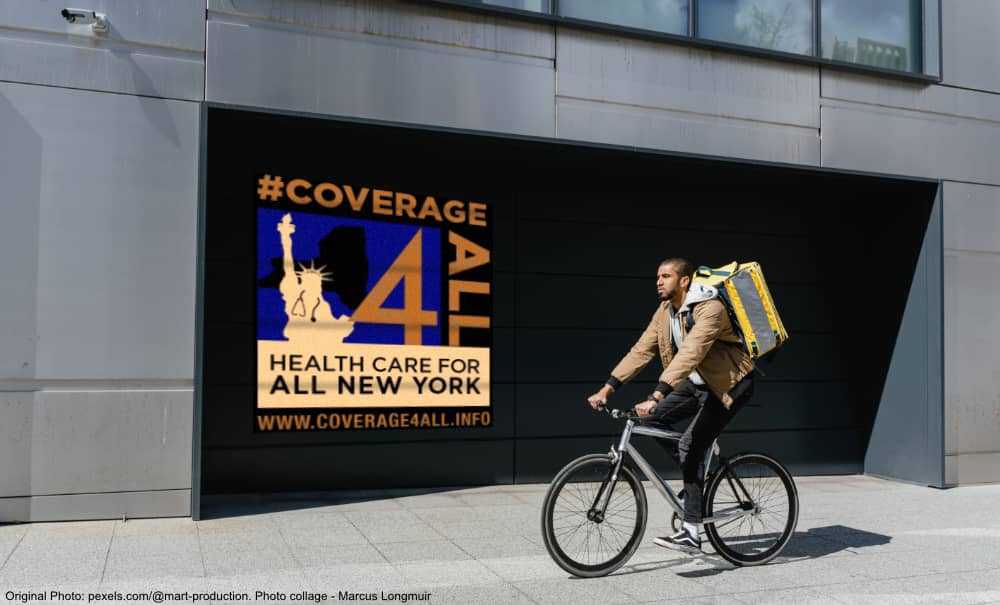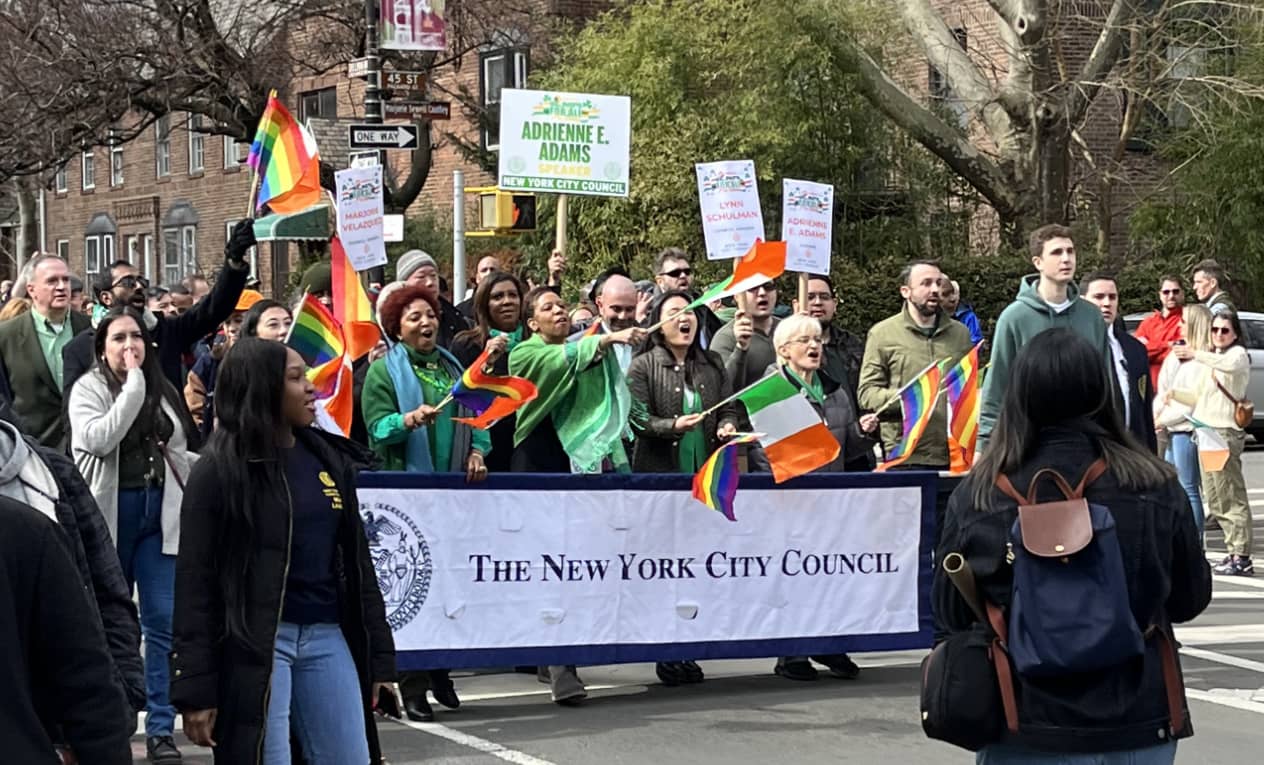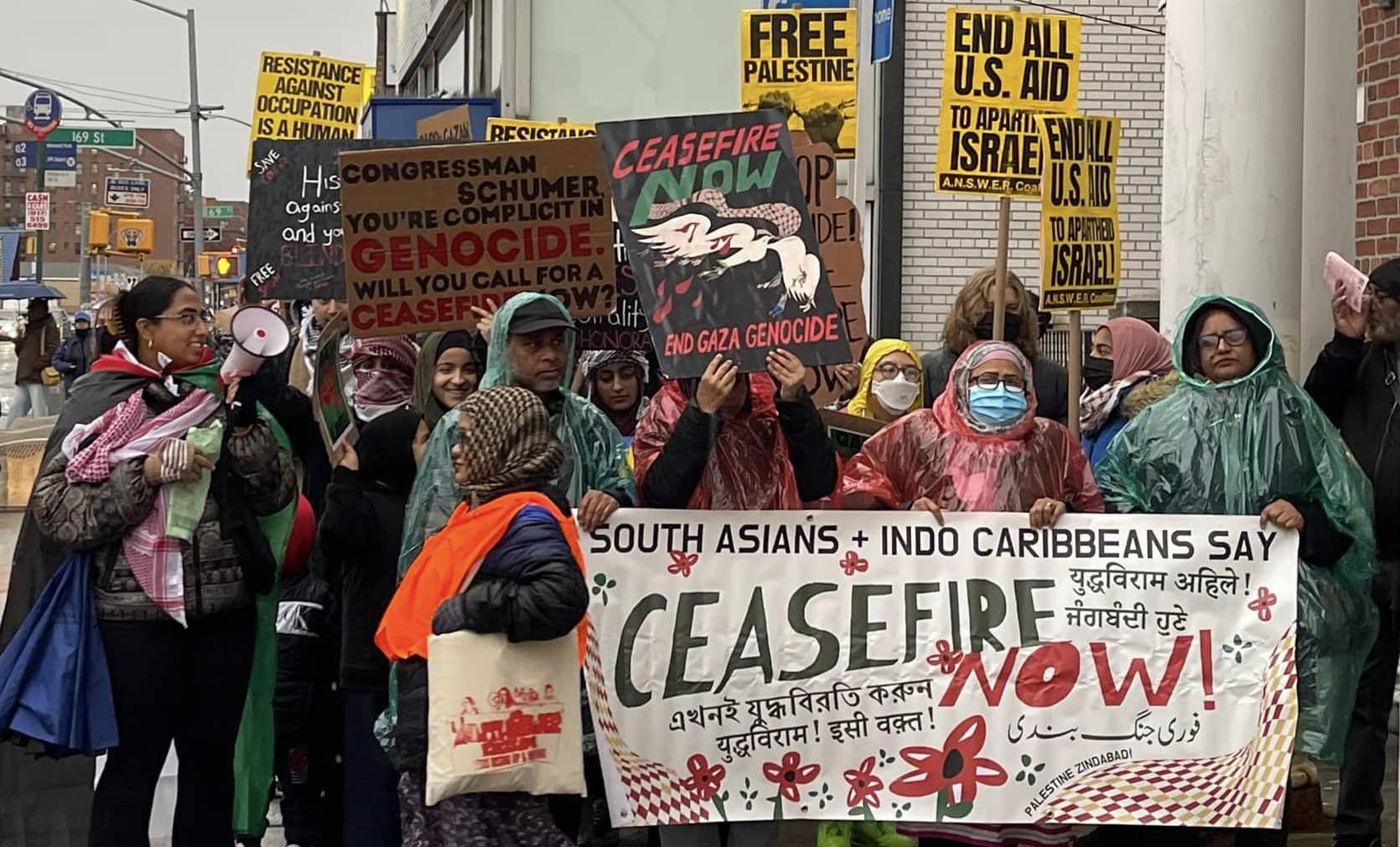
Dear friends,
As we write, it is day 62 of Israel’s ferocious bombardment of Gaza, following Hamas’ shocking attack on Israeli civilians and soldiers on October 7. Almost 70% of Gazans are UN-recognized refugees, including survivors and their descendants of Israel’s mass expulsion of more than 700,000 Palestinians from their lands and homes in 1948, the founding year of the state of Israel. This historic mass displacement of Palestinians is known as the Nakba in Arabic—meaning “the Catastrophe.” At the time of the Nakba, the vast majority of Jewish citizens in the new Israeli state had lived in Palestine for three years or less; many of these new arrivals were themselves Jewish refugees from the horrors of World War II. What has come to be called the “Israeli-Palestinian conflict” is profoundly about migration, dispossession, state terrorism, and violence against refugees in the past century.
We devote this newsletter to the committed actions of one local immigrant justice group that has taken up the call for an immediate ceasefire in Gaza. We support DRUM’s urgent demand.
1. DRUM calls for Ceasefire Now
“As peoples with histories of colonization, genocide and displacement, our hearts are heavy. We grieve for our siblings in Palestine …. As we marched, we carried a sheet with a fraction of the names of children killed due to the occupation. Members carrying the sheet shared that they felt like they were carrying the weight of the children with them.” –DRUM Facebook post (Nov. 4, 2023)
“The pulverizing of Gaza now ranks amongst the worst assaults on any civilian population in our time and age. Each day we see more dead children and new depths of suffering for the innocent people enduring this hell.” —Jan Egeland, Secretary General, Norwegian Refugee Council (Dec. 6, 2023)
DRUM (Desis Rising Up and Moving) activated its membership almost immediately after Israel’s most recent military assault began—the sixth war on Gaza conducted by Israel since its blockade of the occupied territory in 2007. As a Queens-based group fighting for economic justice and political power in working-class South Asian and Indo-Caribbean communities, DRUM sees deep ties between the histories of colonialism among its members, and the colonial violence experienced by Palestinians for more than 70 years.
DRUM’s call for a ceasefire in Gaza and an end to the occupation are thus a form of global solidarity work, carried out through local action. In support of the October 18 National Day of Action, DRUM appealed to NYC leaders to “protect Palestinian, Arab, Muslim and all students against racist attacks,” as progressive Jews occupied the US capitol and high school students across the country walked out of classes demanding an immediate ceasefire. The same day, DRUM members and allies rallied with the Pakistani American Political Committee, urging local Congresswoman Grace Meng to join calls for a ceasefire, and warning that “Pakistani Americans will not support you if you continue to support Israel’s genocide.”
On November 2, DRUM and dozens of other constituents delivered petitions to Meng’s office in Queens signed by more than 800 people demanding that she support a full ceasefire, and vote against additional military financing of Israel. Activists recited names of murdered Gazans, and constituents—including children and elders—put names on sticky notes and left them on Meng’s office window.
Two weeks later, DRUM co-organized a major event at Congresswoman Meng’s Flushing office. Around two hundred constituents gathered and made Salaat al Gha’ib (Muslim funeral prayer in-absentia) for the thousands of Palestinians killed in Gaza and the West Bank by Israeli carpet bombings and assassinations. This public mourning of dead children, elders, teachers, parents, journalists, health workers, and aid workers was followed by dua (supplication) seeking peace, justice, and liberation for the people of Palestine. A program of invited speakers reminded Meng that Israel is funded and armed by our US tax dollars, and the additional billions in US aid to Israel that she supports make her complicit in the genocide being carried out with those weapons and monies.
After the program, constituents representing Latin, Korean, Jewish, Muslim, Afghan, and Arab communities made an altar in memory of those killed by Israel.
As of this writing, Congresswoman Meng has still refused to publicly support a ceasefire. On Friday, December 8, DRUM members joined other Queens residents for a mourners vigil and #CeaseFireNow rally outside her Flushing office.
Knowing that “the US support of genocide and war in Palestine make our communities more vulnerable to violence,” DRUM also organized a recent training in Richmond Hill for members to talk about their experiences of feeling threatened or being attacked. In collaboration with @nonviolentpeaceforce and @soaroverhate, DRUM shared skills to effectively intervene when seeing someone in trouble. And participants actively practiced these non-violent tactics to strengthen community safety for South Asian and Indo-Caribbean New Yorkers.
WHAT CAN WE DO?
- Register to attend DRUM’s Sunday, Dec. 10 solidarity event, “Understanding Palestine,” from 3 – 6pm.
- Contact Congresswoman Grace Meng’s office demanding her immediate support for #CeaseFireNow.
- Support and circulate the actions of Jewish Voice for Peace.
In solidarity and with collective care,
Jackson Heights Immigrant Solidarity Network (JHISN)
Follow @JHSolidarity on Facebook and Twitter and share this newsletter with friends, families, neighbors, networks, and colleagues so they can subscribe and receive news from JHISN.
